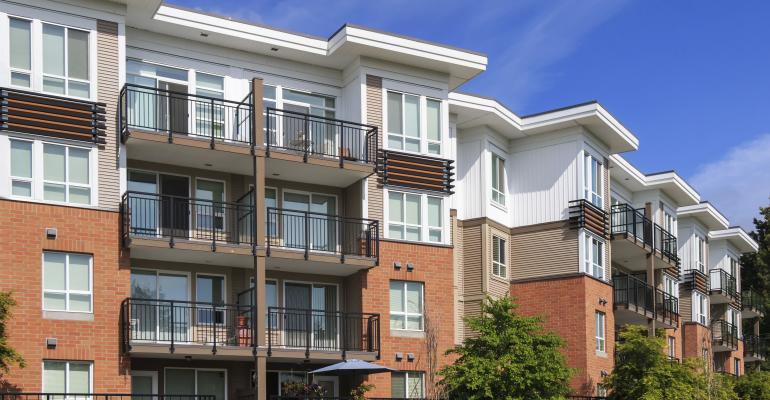The year isn’t turning out quite the way apartment experts expected it to just a few months ago. In January, it seemed like interest rates would begin an upward climb, which would push cap rates higher for investments in apartment properties.
Instead, interest rates have sagged from their highs at the end of 2016, and cap rates are falling once again.
“Apartment cap rates, and cap rate spreads, are declining,” says Jim Costello, senior vice president with Real Capital Analytics (RCA), a New York City-based research firm. “However, deal volume is also down considerably.”
This year is likely to be starkly different from 2016 in the volume of apartment properties that are traded. “It is going to be incredibly difficult to surpass the volume of both single asset sales and portfolio transactions we experienced in 2016,” says Will Matthews, senior vice president with real estate services firm Colliers International.
Investors finally began buying apartment properties again in April 2017. Sales volume for the month was up 6.0 percent compared to the year before, according to RCA. However, one active month can’t make up for the incredibly slow first quarter of 2017. “The trepidation that was prevalent at the start of the year due to the election, anticipated interest rate hikes and geopolitical uncertainty, led many groups to sit on the sidelines in the first quarter,” says Matthews.
As a result, it’s unlikely that this year’s sales volume is going to catch up to last year’s levels. In 2016, the multifamily market saw just under $170 billion in investment sales, according to research firm the CoStar Group. This year, there will likely be less than $140 billion in sales, says John Affleck, a research strategist with CoStar.
Some uncertainties have eased for investors since the beginning of the year, but not as much for multifamily investors. “Higher interest rates have dampened deal volume,” says Affleck. But the sector is also experiencing weakening property fundamentals, concerns about the direction of government policy and competition from the housing sector.
Still, “we anticipate many sellers [to] get off the sidelines and take advantage of a dynamic seller’s market. For the remainder of 2017, we predict single asset transaction volumes [will] increase significantly, with a more favorable interest rate outlook and a mountain of loan maturities,” says Matthews.
Interest rates have become more favorable for investors as the 10-year Treasury is back to 2.25 percent, Matthews adds. “There is little to no impediment for sellers as evidenced by a lack of available supply driving a compressed cap rate environment… Holding back buyers is simply immense competition.”
Cap rates are also trending lower because apartment properties, and value-add apartment properties specifically, remain attractive to investors relative to their other options. Average apartment cap rates dropped to 5.5 percent in April, down 20 basis points from a year earlier, according to RCA.
“We anticipate this to be the new normal, with still remarkable demand fundamentals, fewer active listings creating less transaction volume and more equity and debt available,” says Matthews.

